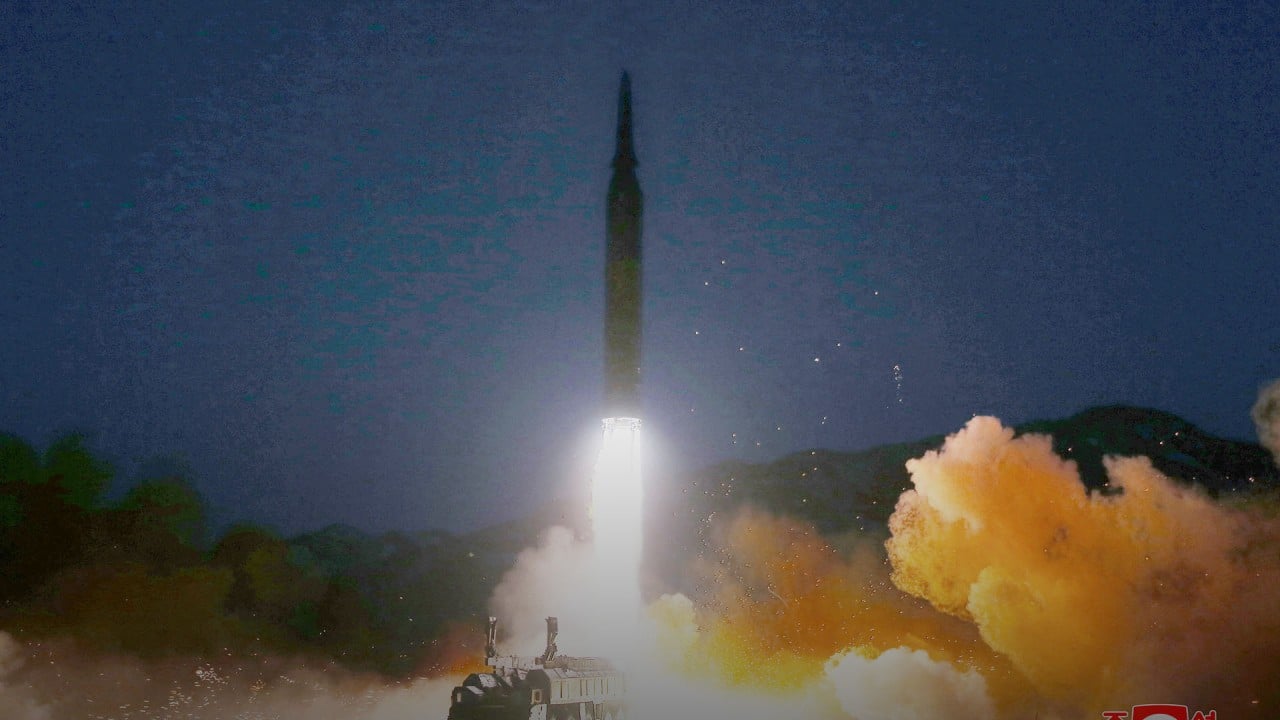
Hypersonic missile delay puts US further behind China and Russia
- A series of failed tests means schedule for what was to be Pentagon’s first operational weapon may be set back for as long as a year
- Meanwhile, China has already demonstrated the technology in a space launch, while Russia has used such missiles in Ukraine
The first US hypersonic weapon will be delayed for as long as a year under a new schedule, even as lawmakers protest that the Pentagon is lagging behind in a new technology that Russia has already used in Ukraine and China has demonstrated in a space launch.
The goal to declare an “early operational capability” for the Lockheed Martin Corp. missile by September 30 has been moved back to sometime in the next financial year, according to an Air Force statement.
The Pentagon has said the Air-Launched Rapid Response Weapon, or ARRW, is expected to be the “nation’s first operational hypersonic weapon”.
Hypersonic weapons are hard to track and destroy because they fly five times the speed of sound and can be manoeuvred. Last month, Russia debuted a hypersonic air-to-ground missile in its attack on Ukraine, and in July China hit a demonstration target on Earth with a weapon in orbit.
Adversaries do not have to meet the rigorous standards set under the US defence acquisition system or face public scrutiny over delays and failure.
The Lockheed missile failed three consecutive booster motor tests last year, leaving it behind in passing two additional motor tests and at least one of a fully assembled missile.
Now, “due to recent flight test anomalies”, the first test of the entire missile has shifted to the period between October 1 and December 30 with additional tests planned later in the next financial year, according to the Air Force statement.
It said the service intends to declare an early operational capability “after successful demonstration of operational utility” through tests of the complete missile after the booster demonstrations.
Aukus partnership plans to develop weapons jointly, including hypersonics
If the weapon is deemed to have a nascent combat capability, leftover test missiles could be used in an emergency because the Air Force has delayed a formal production decision.
The Air Force weapon was thought to be further along in development than either Army or Navy programmes. Those services are using a shared two-stage booster to launch the warhead into hypersonic flight and have not been flight-tested yet.
With the delays, “[defence department] officials now seem to be signalling that ARRW will not be the first hypersonic weapon fielded by the United States,” said Kelley Sayler, a Washington-based missile technology analyst who follows the programme.
The latest delay “suggests that the Air Force may be struggling to address the findings of the failure review board” after the most recent test failure in December, she said.

The slower pace of US hypersonic programmes prompted a number of heated exchanges when Defence Secretary Lloyd Austin testified Tuesday before the House Armed Services Committee.
“You recently called in the defence industrial community that were involved in the hypersonics development as to how we can speed that up,” Republican congressman Mike Turner of Ohio said. “We’re behind our adversaries.”
Without denying that, Austin said “we have to be careful” because “hypersonic is a capability, sir, but it’s not the only capability”. He said “I have engaged industry” to “make sure that they’re leaning into” hypersonic development.
Air Force Secretary Frank Kendall has signalled impatience with what is now a US$1.4 billion development effort. The service has budgeted only $46 million in procurement funding in the fiscal 2023 request and none through 2027, according to the service’s five-year plan. With congressional approval, the US$46 million would be shifted into continued research.
Ukraine war is backdrop in US push for hypersonic weapons
“Despite the setbacks, significant learning from each test event” has taken place, and the Air Force “plans to revisit a procurement decision in fiscal 2024 once specific programmatic milestones have been achieved”, according to the service’s statement.
Jay Pitman, Lockheed’s vice-president for strike weapons, said in a statement that the company “understands the urgent need for hypersonic capabilities” and “to fulfil that need, we are committed to developing ARRW at a highly accelerated pace while building on our history of developing first-of-its-kind technology”.
Lockheed was awarded an initial US$480 million development contract in April 2018 that was broadened in December 2019 to US$986 million.
The ARRW’s delays so far have not revealed a fundamental problem but rather difficulty with how the weapon works with the B-52H bombers that would launch it.
After it is dropped by the bomber, the ARRW is supposed to be accelerated by its booster motor before a solid glide body separates and flies at hypersonic speeds to its target.
The December failure, for example, was caused by a design interface issue resulting in a “voltage instability during transfer from aircraft power to missile batteries” that led to a mission abort, according to the Air Force.
Separately, Lockheed and Aerojet Rocketdyne Holdings Inc. recently completed a second flight test for a different hypersonic weapon in early development with the Defence Advanced Research Projects Agency that might replace the ARRW if its cancelled.



